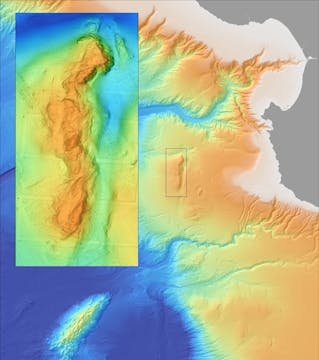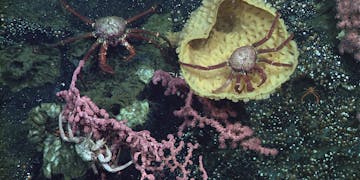
Sur Ridge, shown in the inset, is located southwest of Monterey Bay, just off the Big Sur coast.

Crabs (Paralomis sp. and Munida sp.) as well as a sponge (Heterochone calyx) and a coral (Paragorgia arborea) observed at Sur Ridge.

Sur Ridge, shown in the inset, is located southwest of Monterey Bay, just off the Big Sur coast.
MBARI's ongoing investment in ROVs and access to the sea has led to advances in the understanding of the animals and communities in the ocean's midwater.